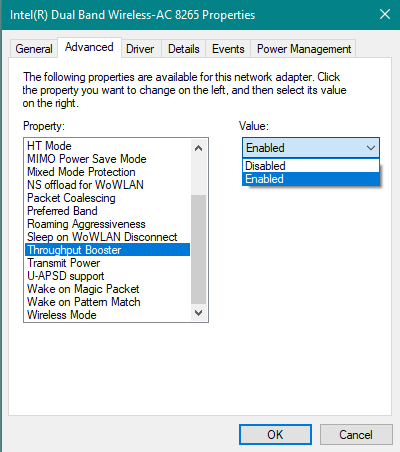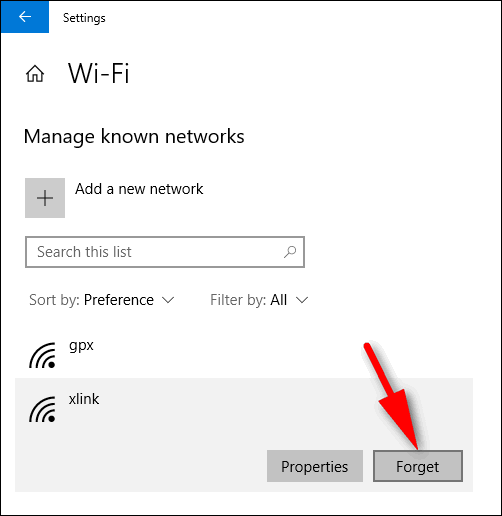- Android Network & Wireless Cards Driver Download For Windows 10 32-bit
- Android Network & Wireless Cards Driver Download For Windows 10 Windows 7
- Android Network & Wireless Cards Driver Download For Windows 10 7
- Android Network & Wireless Cards Driver Download For Windows 10 64-bit
Download Wi-Fi device drivers or install DriverPack Solution software for driver scan and update. Android Network Utils. Contribute to Qixingchen/Android-Network-Utils development by creating an account on GitHub. Cx File Explorer is a good, basic file browser. It features a relatively modern UI, all of the basics, and support for many cloud storage services and shared storage servers (FTP, SMB, etc). By default, Android requires you to perform network operations on a thread other than the main UI thread; if you don't, a NetworkOnMainThreadException is thrown. In the UserRepository class shown in the previous code example, the network operation isn't actually triggered.
The Android operating system contains standard Linux networking utilitiessuch as ifconfig, ip, and ip6tables.These utilities reside on the system image and enable configuration of theentire Linux networking stack. On devices running Android 7.x and lower,vendor code is allowed to call these binaries directly, which presents thefollowing problems:
- Because network utilities are updated in the system image, they do notprovide a stable implementation.
- The scope of the networking utilities is so broad it is difficult to evolvethe system image while guaranteeing predictable behaviour.
On devices running Android 8.0 and higher, the vendor partition remains the samewhile the system partition receives an update. To achieve this, Android 8.0provides the ability to define a stable, versioned interface while also usingSELinux restrictions to keep the interdependency of vendor and system image to aknown good set.
Vendors can use the platform-provided network configuration utilities toconfigure the Linux networking stack, but these utilities do not yet include aHIDL interface wrapper. To define such an interface, Android 8.0 includes thenetutils-wrapper-1.0 tool.
Netutils wrapper
The netutils wrapper utility provides a subset of the Linuxnetwork stack configuration that is not affected by system partition updates.Android 8.0 contains version 1.0 of the wrappers, which allows you to pass thesame arguments as the wrapped utilities, installed in the system partition at/system/bin as follows:
Symlinks show the networking utilities wrapped by the netutilswrapper, which include:
ipiptablesip6tablesndctc
To use these utilities in Android 8.0 and higher, vendor implementations mustadhere to the following rules:
- Vendor processes must not execute
/system/bin/netutils-wrapper-1.0directly; attempts to do so willresult in error. - All utilities wrapped by
netutils-wrapper-1.0must be launchedusing their symlinks. For example, change the vendor code that did this before(/system/bin/ip <FOO> <BAR>) to/system/bin/ip-wrapper-1.0 <FOO> <BAR>. - Executing the wrappers without domain transition is prohibited in platformSELinux policy. This rule must not be changed and is tested against in theAndroid Compatibility Test Suite (CTS).
- Executing the utilities directly (e.g.,
/system/bin/ip <FOO> <BAR>) from the vendor processesis also prohibited in the platform SELinux policies. This rule must not bechanged and is tested against in CTS. - Any vendor domain (process) that needs to launch a wrapper must add thefollowing domain transition rule in the SELinux policy:
domain_auto_trans(VENDOR-DOMAIN-NAME, netutils_wrapper_exec,netutils_wrapper).
Netutils wrapper filters
Wrapped utilities can be used to configure almost any aspect of the Linuxnetworking stack. However, to ensure it is possible to maintain a stableinterface and allow updates to the system partition, only certain combinationsof command line arguments are allowed; other commands will be rejected.
Vendor interfaces and chains
The wrapper has a concept of vendor interfaces. These are interfacestypically managed by vendor code, such as cellular data interfaces. Typically,other types of interfaces (such as Wi-Fi) are managed by the HALs and theframework. The wrapper recognizes vendor interfaces by name (using a regularexpression) and allows vendor code to perform many operations on them.Currently, vendor interfaces are:
- Interfaces whose names end in 'oem' followed by a number, such as
oem0orr_oem1234. - Interfaces used by current SOC and OEM implementations, such as
rmnet_data[0-9].
Names of interfaces that are typically managed by the framework (such aswlan0) are never vendor interfaces.
The wrapper has a similar concept of vendor chains. These are usedin iptables commands and are also recognized by name. Currently,vendor chains:
- Start with
oem_. - Are used by current SOC and OEM implementations, e.g., chains starting in
nm_orqcom_.
Allowed commands
Currently allowed commands are listed below. Restrictions are implemented viaa set of regular expressions on the executed command lines. For details, referto system/netd/netutils_wrappers/NetUtilsWrapper-1.0.cpp.
ip
The ip command is used to configure IP addresses, routing, IPsecencryption, and a number of other network parameters. The wrapper allows thefollowing commands:
- Add and remove IP addresses from vendor-managed interfaces.
- Configure IPsec encryption.
iptables/ip6tables
The iptables and ip6tables commands are used toconfigure firewalling, packet mangling, NAT, and other per-packet processing.The wrapper allows the following commands:
- Add and delete vendor chains.
- Add and delete rules in any chain that refers to packets going into(
-i) or out of (-o) a vendor interface. - Jump to a vendor chain from any point in any other chain.
ndc
ndc is used to communicate to the netd daemon thatperforms most network configuration on Android. The wrapper allows the followingcommands:
- Create and destroy OEM networks (
oemXX). - Add vendor-managed interfaces to OEM networks.
- Add routes to OEM networks.
- Enable or disable IP forwarding globally and on vendor interfaces.
tc
The tc command is used to configure traffic queueing and shapingon vendor interfaces.
The Android operating system contains standard Linux networking utilitiessuch as ifconfig, ip, and ip6tables.These utilities reside on the system image and enable configuration of theentire Linux networking stack. On devices running Android 7.x and lower,vendor code is allowed to call these binaries directly, which presents thefollowing problems:
- Because network utilities are updated in the system image, they do notprovide a stable implementation.
- The scope of the networking utilities is so broad it is difficult to evolvethe system image while guaranteeing predictable behaviour.
On devices running Android 8.0 and higher, the vendor partition remains the samewhile the system partition receives an update. To achieve this, Android 8.0provides the ability to define a stable, versioned interface while also usingSELinux restrictions to keep the interdependency of vendor and system image to aknown good set.
Vendors can use the platform-provided network configuration utilities toconfigure the Linux networking stack, but these utilities do not yet include aHIDL interface wrapper. To define such an interface, Android 8.0 includes thenetutils-wrapper-1.0 tool.

Netutils wrapper
The netutils wrapper utility provides a subset of the Linuxnetwork stack configuration that is not affected by system partition updates.Android 8.0 contains version 1.0 of the wrappers, which allows you to pass thesame arguments as the wrapped utilities, installed in the system partition at/system/bin as follows:
Symlinks show the networking utilities wrapped by the netutilswrapper, which include:
ipiptablesip6tablesndctc
Android Network & Wireless Cards Driver Download For Windows 10 32-bit
To use these utilities in Android 8.0 and higher, vendor implementations mustadhere to the following rules:
- Vendor processes must not execute
/system/bin/netutils-wrapper-1.0directly; attempts to do so willresult in error. - All utilities wrapped by
netutils-wrapper-1.0must be launchedusing their symlinks. For example, change the vendor code that did this before(/system/bin/ip <FOO> <BAR>) to/system/bin/ip-wrapper-1.0 <FOO> <BAR>. - Executing the wrappers without domain transition is prohibited in platformSELinux policy. This rule must not be changed and is tested against in theAndroid Compatibility Test Suite (CTS).
- Executing the utilities directly (e.g.,
/system/bin/ip <FOO> <BAR>) from the vendor processesis also prohibited in the platform SELinux policies. This rule must not bechanged and is tested against in CTS. - Any vendor domain (process) that needs to launch a wrapper must add thefollowing domain transition rule in the SELinux policy:
domain_auto_trans(VENDOR-DOMAIN-NAME, netutils_wrapper_exec,netutils_wrapper).
Netutils wrapper filters
Wrapped utilities can be used to configure almost any aspect of the Linuxnetworking stack. However, to ensure it is possible to maintain a stableinterface and allow updates to the system partition, only certain combinationsof command line arguments are allowed; other commands will be rejected.
Vendor interfaces and chains
The wrapper has a concept of vendor interfaces. These are interfacestypically managed by vendor code, such as cellular data interfaces. Typically,other types of interfaces (such as Wi-Fi) are managed by the HALs and theframework. The wrapper recognizes vendor interfaces by name (using a regularexpression) and allows vendor code to perform many operations on them.Currently, vendor interfaces are:
- Interfaces whose names end in 'oem' followed by a number, such as
oem0orr_oem1234. - Interfaces used by current SOC and OEM implementations, such as
rmnet_data[0-9].
Names of interfaces that are typically managed by the framework (such aswlan0) are never vendor interfaces.
The wrapper has a similar concept of vendor chains. These are usedin iptables commands and are also recognized by name. Currently,vendor chains:
- Start with
oem_. - Are used by current SOC and OEM implementations, e.g., chains starting in
nm_orqcom_.
Allowed commands
Currently allowed commands are listed below. Restrictions are implemented viaa set of regular expressions on the executed command lines. For details, referto system/netd/netutils_wrappers/NetUtilsWrapper-1.0.cpp.
ip
The ip command is used to configure IP addresses, routing, IPsecencryption, and a number of other network parameters. The wrapper allows thefollowing commands:
- Add and remove IP addresses from vendor-managed interfaces.
- Configure IPsec encryption.
iptables/ip6tables
The iptables and ip6tables commands are used toconfigure firewalling, packet mangling, NAT, and other per-packet processing.The wrapper allows the following commands:
Android Network & Wireless Cards Driver Download For Windows 10 Windows 7
- Add and delete vendor chains.
- Add and delete rules in any chain that refers to packets going into(
-i) or out of (-o) a vendor interface. - Jump to a vendor chain from any point in any other chain.
ndc
ndc is used to communicate to the netd daemon thatperforms most network configuration on Android. The wrapper allows the followingcommands:
- Create and destroy OEM networks (
oemXX). - Add vendor-managed interfaces to OEM networks.
- Add routes to OEM networks.
- Enable or disable IP forwarding globally and on vendor interfaces.

Android Network & Wireless Cards Driver Download For Windows 10 7
tc
Android Network & Wireless Cards Driver Download For Windows 10 64-bit
The tc command is used to configure traffic queueing and shapingon vendor interfaces.
